Nicholas Kinsey's Blog, page 7
December 11, 2016
7 – BRITAIN’S SECRET SERVICES
What did MI6 or MI5 think about Hess?
MI5 had a special branch in 1941 known as B Branch whose job was to handle suspected German agents. They had some very competent people, although many were rank amateurs in intelligence gathering. Men like John Cecil Masterman, Frank Foley, T.A. Robertson, and ‘Tin Eye’ Stevens who all spoke German and were familiar with every aspect of German society. Masterman was behind the Twenty Committee (XX – Double Cross system) who were so successful during the war turning German agents into doubles and sending disinformation back to their handlers in Germany.
 Tower of London
Tower of LondonAfter a few days in Scotland, the authorities moved Hess south to the Tower of London and then to Mytchett Place near Farnborough in Surrey, known as Camp Z.
 Mytchett Place, “Camp Z”
Mytchett Place, “Camp Z”
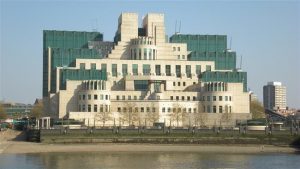 MI5
MI5It was here that MI5 would have examined every detail of Hess’s previous life. No decoy or Hess double could have withstood five minutes under this kind of professional scrutiny (childhood in Egypt, education in Germany, pay, housing, insurance, parents, co-workers, etc.). Every facet of a man’s life would be examined under a critical eye and Hess’ life was well known to his interrogators since he was a public figure and had been on a podium with Hitler for almost 20 years. It is almost inconceivable that the MI5 did not discover the truth about the man.
I hope you enjoyed the first chapter of the book (It is freely available for subscribers of this blog, so grab your copy now if you haven’t already done so). The text is now complete and going to the publisher this week. The book should be out by December 15.
November 22, 2016
6 – DISSENTING VOICES
There are dozens of theories concerning the Hess story, a lot of them unsubstantiated and many that are impossible to believe. We think Dr. W. Hugh Thomas’ theory is the most convincing. Here is a medical professional, a specialist in bullet wounds who worked in Northern Ireland during the troubles, who found no trace of scar tissue on the Hess’ chest.
In 1989 the BBC journalist Roy McHardy concluded from his reading of Hess’ medical file that Dr. Thomas was mistaken in believing the lung shot was a serious wound. According to McHardy, the reported wound had been a clean-through shot from a small calibre rifle which left minor scarring. This clearly contradicted Thomas’ reading of the medical file which mentioned a “schwer verwundet” (badly wounded) shot through the left lung followed by four months in the hospital.
I think the physical evidence clearly supports Thomas’ conclusion that the man who arrived in Scotland was an imposter. I have more faith in the word of four medical specialists than the conclusion of a BBC journalist who had no experience with bullet wounds.
Even in the first few days in Scotland, the Hess double made numerous elementary errors about his past. To a medical professional, he gave the wrong age and declared that he has been one of four children when the real Hess had only one brother and one sister. The real Hess was a well educated, even brilliant writer and thinker, cool and reserved, the man in British hands spouted political arguments with the reasoning of a child. The real Hess was once called the “conscience of the Nazi party” and was a vegetarian, the man in the cell in Scotland was no intellectual and would eat anything displaying horrendous table manners. The real Hess loved to play tennis, but the man in Scotland had no knowledge of the sport.
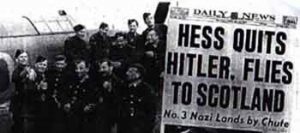 And just how did this man get to Scotland in a Messerschmitt plane leaving from Augsburg in Southern Germany without refueling? The D model had a range of some 700-850 miles and the flight to Scotland would take him over 1200 miles. Hess was photographed climbing into a Series D model in Augsburg but later parachuted out of a Series E2 model in Scotland.
And just how did this man get to Scotland in a Messerschmitt plane leaving from Augsburg in Southern Germany without refueling? The D model had a range of some 700-850 miles and the flight to Scotland would take him over 1200 miles. Hess was photographed climbing into a Series D model in Augsburg but later parachuted out of a Series E2 model in Scotland.
This week we are releasing the first chapter of the novel. To download the first chapter for free, you just have to subscribe on my blog!
The book will be available in paperback and ebook in book stores and on Amazon in December 2016.
Tell me what you think about this first chapter in the comments section below.
Next week we will talk about the interrogation of Rudolf Hess by the British Secret Services.
6 – DISSENTING VOICES
There are dozens of theories concerning the Hess story, a lot of them unsubstantiated and many that are impossible to believe. We think Dr. W. Hugh Thomas’ theory is the most convincing. Here is a medical professional, a specialist in bullet wounds who worked in Northern Ireland during the troubles, who found no trace of scar tissue on the Hess’ chest.
In 1989 the BBC journalist Roy McHardy concluded from his reading of Hess’ medical file that Dr. Thomas was mistaken in believing the lung shot was a serious wound. According to McHardy, the reported wound had been a clean-through shot from a small calibre rifle which left minor scarring. This clearly contradicted Thomas’ reading of the medical file which mentioned a “schwer verwundet” (badly wounded) shot through the left lung followed by four months in the hospital.
I think the physical evidence clearly supports Thomas’ conclusion that the man who arrived in Scotland was an imposter. I have more faith in the word of four medical specialists than the conclusion of a BBC journalist who had no experience with bullet wounds.
Even in the first few days in Scotland, the Hess double made numerous elementary errors about his past. To a medical professional, he gave the wrong age and declared that he has been one of four children when the real Hess had only one brother and one sister. The real Hess was a well educated, even brilliant writer and thinker, cool and reserved, the man in British hands spouted political arguments with the reasoning of a child. The real Hess was once called the “conscience of the Nazi party” and was a vegetarian, the man in the cell in Scotland was no intellectual and would eat anything displaying horrendous table manners. The real Hess loved to play tennis, but the man in Scotland had no knowledge of the sport.
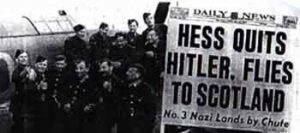 And just how did this man get to Scotland in a Messerschmitt plane leaving from Augsburg in Southern Germany without refueling? The D model had a range of some 700-850 miles and the flight to Scotland would take him over 1200 miles. Hess was photographed climbing into a Series D model in Augsburg but later parachuted out of a Series E2 model in Scotland.
And just how did this man get to Scotland in a Messerschmitt plane leaving from Augsburg in Southern Germany without refueling? The D model had a range of some 700-850 miles and the flight to Scotland would take him over 1200 miles. Hess was photographed climbing into a Series D model in Augsburg but later parachuted out of a Series E2 model in Scotland.
This week we are releasing the first chapter of the novel. To download the first chapter for free, you just have to subscribe on my blog!
The book will be available in paperback and ebook in book stores and on Amazon in December 2016.
Tell me what you think about this first chapter in the comments section below.
Next week we will talk about the interrogation of Rudolf Hess by the British Secret Services.
November 9, 2016
5 – THE SURGICAL EVIDENCE
“Once you eliminate the impossible, whatever remains, no matter how improbable, must be the truth.” Arthur Conan Doyle
Playing Rudolf Hess is a fascinating story about one of the greatest mysteries of the Second World War and is based on the true story of Hess’ incarceration in Britain, his faked amnesia and his bombshell revelation at Nuremberg. Solid historical research went into writing the book which drew on the journals of some 18 warders, W. Hugh Thomas’ The Murder of Rudolf Hess, David Irving’s Hess: the Missing Years 1941-45 and numerous books on the German double agent network run by MI5.
The heart of the story is the surgical evidence presented by Dr. W. Hugh Thomas in his excellent book which created quite a stir in 1979. Thomas was the doctor at Hess’ medical checkup in 1973 at the British Military Hospital in Berlin. Dr Thomas had studied Hess’ medical file from the First World War. Hess had been wounded twice, once in 1916 on the Western Front and later in Romania. The Romanian wound was very serious, a life-threatening chest wound and would have left major scars. The bullet had entered the man’s chest from the front and exited in the back.Thomas was an expert on wounds caused by high-velocity bullets after serving in the British Army in Ireland during the troubles.
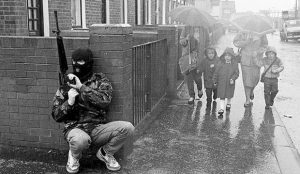 A Belfast man on patrol for the Irish Republican Army, 1987. Pacemaker Press International/Belfast Telegraph Archive
A Belfast man on patrol for the Irish Republican Army, 1987. Pacemaker Press International/Belfast Telegraph ArchiveSo in September 1973 at the Allied meeting of medical professionals (Soviet Union, France, Britain and the US) at the British military hospital, Dr. Thomas had the chance to observe Hess’ naked chest after the x-ray examination. Thomas helped Hess into his hospital gown and was speechless seeing the evidence. According to the good doctor, there was no trace of any bullet wound in the chest area.
Further support for Thomas’ theory came from Dr. J. Gibson Graham, a Lieutenant-Colonel of the Royal Army Medical Corp who examined Hess on May 13, 1941. Hess was complaining of an injured ankle and back pain after jumping out of his plane. After the physical examination and the x-ray of the man’s chest, Gibson Graham reported finding no chest scars or any sign of earlier damage to the lungs. His comment was “the lung fields are clear, save that in the right upper zone there is a small calcified area” (due to tuberculosis). Thomas mentioned in great detail in his book that: “when the lung heals, the dead matter is replaced by fibrous tissue. Both these and the pneumonic consolidation of the surround part of the lung show up clearly on x-rays”. So the soft-tissue tracks of a bullet would inevitably show up on an x-ray.
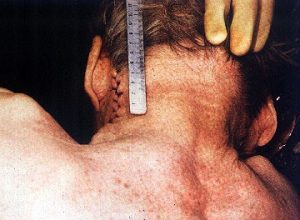 In 1987 on the death of Hess in Spandau prison in Berlin, two independent post-mortem examinations of his body were made, one by a leading British pathologist and one by a German, and both men concluded that there was not a trace of a bullet wound to the chest area.
In 1987 on the death of Hess in Spandau prison in Berlin, two independent post-mortem examinations of his body were made, one by a leading British pathologist and one by a German, and both men concluded that there was not a trace of a bullet wound to the chest area.
The British government has remained silent about the Hess affair. They had locked up the man in 1941, delivered him to the Nuremberg trials in 1945 and helped jail him at Spandau. Why the silence? The results of the MI6/MI5 interrogation of the fugitive Hess have never been revealed.
So who was this man? Was he an imposter? I tend to believe surgical evidence when provided by competent medical doctors and, as we all know, scars are very difficult to hide without plastic surgery. Our bodies are a roadmap of scars, bumps and bruises.
Can anyone offer a reasonable explanation after listening to the surgical evidence? If you have an explanation, please share it in the comments section below.
My editor Doug Sutherland has just completed his review of the book. Here are his comments:
“I think you’ve done a great job on this – very plausible and entertaining. Anybody with more than a passing interest in Second World War history and the Hess legend would find it worthwhile.”
The editing is now complete and the pdf file is going to my publisher. Next week we will give you a peek preview of the novel.
November 8, 2016
5 – THE SURGICAL EVIDENCE
“Once you eliminate the impossible, whatever remains, no matter how improbable, must be the truth.” Arthur Conan Doyle
Playing Rudolf Hess is a fascinating story about one of the greatest mysteries of the Second World War and is based on the true story of Hess’ incarceration in Britain, his faked amnesia and his bombshell revelation at Nuremberg. Solid historical research went into writing the book which drew on the journals of some 18 warders, W. Hugh Thomas’ The Murder of Rudolf Hess, David Irving’s Hess: the Missing Years 1941-45 and numerous books on the German double agent network run by MI5.
The heart of the story is the surgical evidence presented by Dr. W. Hugh Thomas in his excellent book which created quite a stir in 1979. Thomas was the doctor at Hess’ medical checkup in 1973 at the British Military Hospital in Berlin. Dr Thomas had studied Hess’ medical file from the First World War. Hess had been wounded twice, once in 1916 on the Western Front and later in Romania. The Romanian wound was very serious, a life-threatening chest wound and would have left major scars. The bullet had entered the man’s chest from the front and exited in the back.Thomas was an expert on wounds caused by high-velocity bullets after serving in the British Army in Ireland during the troubles.
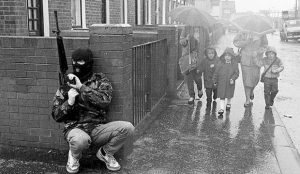 A Belfast man on patrol for the Irish Republican Army, 1987. Pacemaker Press International/Belfast Telegraph Archive
A Belfast man on patrol for the Irish Republican Army, 1987. Pacemaker Press International/Belfast Telegraph ArchiveSo in September 1973 at the Allied meeting of medical professionals (Soviet Union, France, Britain and the US) at the British military hospital, Dr. Thomas had the chance to observe Hess’ naked chest after the x-ray examination. Thomas helped Hess into his hospital gown and was speechless seeing the evidence. According to the good doctor, there was no trace of any bullet wound in the chest area.
Further support for Thomas’ theory came from Dr. J. Gibson Graham, a Lieutenant-Colonel of the Royal Army Medical Corp who examined Hess on May 13, 1941. Hess was complaining of an injured ankle and back pain after jumping out of his plane. After the physical examination and the x-ray of the man’s chest, Gibson Graham reported finding no chest scars or any sign of earlier damage to the lungs. His comment was “the lung fields are clear, save that in the right upper zone there is a small calcified area” (due to tuberculosis). Thomas mentioned in great detail in his book that: “when the lung heals, the dead matter is replaced by fibrous tissue. Both these and the pneumonic consolidation of the surround part of the lung show up clearly on x-rays”. So the soft-tissue tracks of a bullet would inevitably show up on an x-ray.
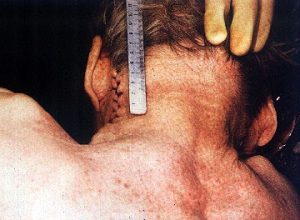 In 1987 on the death of Hess in Spandau prison in Berlin, two independent post-mortem examinations of his body were made, one by a leading British pathologist and one by a German, and both men concluded that there was not a trace of a bullet wound to the chest area.
In 1987 on the death of Hess in Spandau prison in Berlin, two independent post-mortem examinations of his body were made, one by a leading British pathologist and one by a German, and both men concluded that there was not a trace of a bullet wound to the chest area.
The British government has remained silent about the Hess affair. They had locked up the man in 1941, delivered him to the Nuremberg trials in 1945 and helped jail him at Spandau. Why the silence? The results of the MI6/MI5 interrogation of the fugitive Hess have never been revealed.
So who was this man? Was he an imposter? I tend to believe surgical evidence when provided by competent medical doctors and, as we all know, scars are very difficult to hide without plastic surgery. Our bodies are a roadmap of scars, bumps and bruises.
Can anyone offer a reasonable explanation after listening to the surgical evidence? If you have an explanation, please share it in the comments section below.
My editor Doug Sutherland has just completed his review of the book. Here are his comments:
“I think you’ve done a great job on this – very plausible and entertaining. Anybody with more than a passing interest in Second World War history and the Hess legend would find it worthwhile.”
The editing is now complete and the pdf file is going to my publisher. Next week we will give you a peek preview of the novel.
October 26, 2016
4 – THE IMPOSTER STORY
Don’t we love stories about doppelgangers and body-doubles!
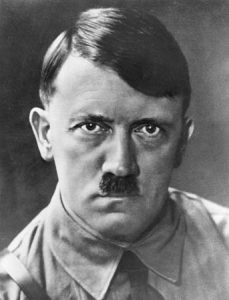 Adolf Hitler
Adolf HitlerPolitical assassination is always a risk for a public figure. Hitler had several doubles who replaced him at public events where there might be some danger to his person. The use of a “political decoy” (doppelganger or body-double) was common for political leaders in Europe during the war years. It is believed that Hitler had at least four doppelgangers who were trained to impersonate him.
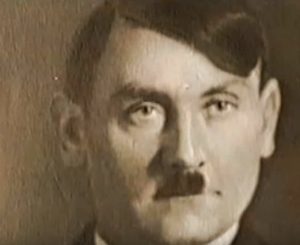 Gustav Weler
Gustav WelerOne of them was Gustav Weler. He would stand in for Hitler on occasion and was used as a political decoy for security reasons. When Berlin was captured at the end of the war, it was thought that Weler had been executed by a gunshot to the forehead in an attempt to confuse Allied troops. When “his” corpse was discovered in the Reich Chancellery garden by Soviet troops, it was mistakenly believed to be that of Hitler because of his identical moustache and haircut. The corpse was photographed and filmed by the Soviets. His body was brought to Moscow for investigation and buried in the yard at Lefortovo prison.
Voice and movement instructions were given to the doppelgangers. They were trained to mimic Hitler’s soft conversational voice and distinctive walk. Plastic surgery was undertaken and their faces and dental work were altered. German efficiency even went as far as breaking their spines in the same place where Hitler had been injured in the First World War. Nothing was left to chance.
But the one thing that none of these doppelgangers could ever hope to duplicate, was Hitler’s hypnotic, charismatic public speaking style. His ability to sway a crowd had never been matched or equalled. The doubles were good for public appearances, parties, or maybe meetings or briefings where Hitler was not expected to have that much interaction with his underlings.
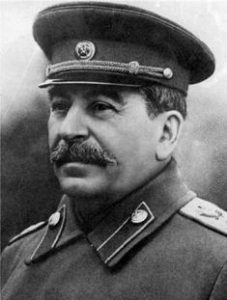 Joseph Stalin
Joseph StalinThe Soviet dictator Joseph Stalin is alleged to have had a double, identified only as “Rashid”. It is believed that the KGB learned that Rashid was a “double” for Stalin and employed him to replace Stalin for some public functions after World War II. Rashid had spent two years studying with Alexei Dikiy, an actor who played the role of Stalin in propaganda films. Rashid claimed there were other Stalin lookalikes employed by the KGB, although he never met any. He claimed to have heard of another Stalin double who was hired to live in the dictator’s dacha outside of Moscow in the late 1940s and 1950s when Stalin was dying. This double filled in for Stalin at media events and at times when Stalin had to meet government functionaries and others. Rashid died in 1991, aged 93.
In 2008 Felix Dadaev, another one of Stalin’s doubles, wrote a book about his adventures as a political decoy. The Putin government gave him permission to tell his story at age 88. He appeared in a 2014 documentary about Stalin’s last days on German television.
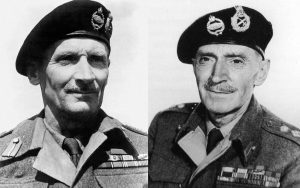 Clifton James (Left) and Bernard Montgomery (Right)
Clifton James (Left) and Bernard Montgomery (Right)Perhaps the most famous political decoy was an actor and soldier Clifton James who doubled for Field Marshal Bernard Montgomery (“Monty”) during the WW2. In 1940, James had acted in an Army production called When Knights Were Bold and his photograph appeared in an Army newspaper with a remark about how much he resembled General Montgomery.
As a result, he was approached by actor David Niven in May 1944. Niven was then a colonel in the Army Kinematograph Section. He told James that he was wanted to impersonate “Monty”, as this would allow Montgomery to be somewhere else, thus confusing the Germans. James had to learn Montgomery’s gestures, mannerisms, gait and voice and had to give up smoking. James had lost his right-hand middle finger during the Great War, so a realistic replacement was made for him.
James doubled for Field Marshal Bernard Montgomery in ‘Operation Copperhead’. He was flown to Gibraltar in May 1944 just before D-Day and paraded around town as the famous field marshal and then did the same in Algiers giving credibility to a possible invasion plan for the South of France. According to several captured enemy generals, German intelligence believed that Clifton James was in fact Montgomery, but still guessed that it was a feint and the invasion would come from the north.
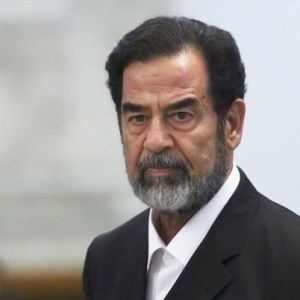 Sadam Hussein
Sadam HusseinSaddam Hussein had a few doubles working for him for similar reasons. In 2003, the German television network ZDF claimed that Saddam Hussein was frequently replaced with doubles for TV appearances. This analysis was based on sophisticated measuring techniques, which detected discrepancies in the position of Hussein’s facial features and blemishes from appearance to appearance. It was supported by the opinion of Jerrald Post, the man who created the CIA’s Psychological Profile Unit. It was also alleged that Austrian politician Jörg Haider had actually met a double when he thought he was meeting Hussein. This claim is disputed by Dr Ala Bashir, Saddam Hussein’s former personal physician, who said: “The stories about Saddam Hussein having body doubles, to foster the impression that the Iraqi dictator was everywhere, are nonsense.”
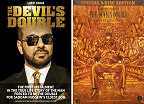
Then, of course, there is the son of Saddam Hussein. Remember the movie about Saddam’s sadistic son Uday entitled The Devil’s Double which came out a few years ago. It told the story of an Iraqi soldier fighting in the Iran-Iraq War who was called on to become a “fedai” (body-double) for Uday Hussein, the playboy son of Iraqi president Saddam Hussein.
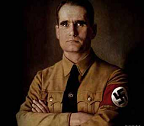 Rudolf Hess
Rudolf HessThe Rudolf Hess imposter story, however, is not in the same league. Here is a man who actually replaced the real Rudolf Hess after he disappeared during his flight from Augsburg in Bavaria in 1941 (possibly executed by Himmler). He was a political decoy in the full sense of the term and his subterfuge lived on for some 32 years!
Hess’ body-double stood in the box with Göring at Nuremberg and was sentenced to life imprisonment at Spandau in Berlin. The doppelganger was strangled to death in 1987 by his American jailers in the courtyard of the same prison. Everything about this story is exceptional and today it remains one of the great mysteries of WWII.
I expect my novel Playing Rudolf Hess will raise a lot of eyebrows across Europe and in the UK. A lot of important people will attack the novel as a lie, a fabrication, but others will find it very compelling. Everyone loves a mystery so the novel should benefit from a lot of public interest.
Over the next few weeks we will be releasing the first chapters of the novel. The book will be available in paperback and ebook in book stores and on Amazon sometime in November 2016.
Next week we will show you the surgical evidence that the man who flew to Scotland could not have been Rudolf Hess.
Can you think of any other doppelgangers? Please share in the comments section below.
References: Wikipedia and other sources
October 19, 2016
3 – WHY I LIKE HISTORICAL FICTION
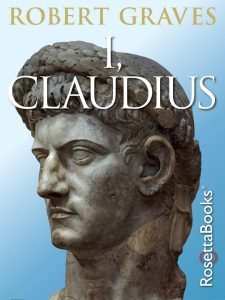 Robert Graves – I, Claudius
Robert Graves – I, ClaudiusI believe my first experience reading historical fiction was Robert Graves’ I Claudius which I read as a schoolboy in England. This was followed by several Ernest Hemingway novels about the Spanish civil war (For Whom the Bell Tolls, A Farewell to Arms) and numerous other authors. I must have been around 12 years old at the time and my teachers at my prep school in Bristol tried to impress on me the socialist values of George Orwell and others. They succeeded. I loved George Orwell’s stories which we read in class.
Since then, of course, I have moved on to historical novels by celebrated authors such as Russell Banks, Gore Vidal, Hilary Mantel, Guy Vanderhaeghe, Thomas Keneally, Ronald Wright, Sean Haldane, etc. I have always enjoyed historical fiction where a large part of the story is true and based on known facts. This imparts a credibility to the work that would otherwise not exist. Recently reading Thomas Keneally’s The Daughters of Mars about two Australian nurses saving lives during the Gallipoli campaign and in the trenches of Europe, I came away disappointed when I learned in the final chapter that a large part of the story was a complete invention.
 Edward Gibbon – The Decline And Fall Of The Roman Empire
Edward Gibbon – The Decline And Fall Of The Roman EmpireI come from a family of history buffs. My dad was a nuclear physicist and loved history, in particular Roman history. In the 1950s going to work on the bus, he read Edward Gibbon’s six-volume History of the Decline and Fall of the Roman Empire. Then during a sabbatical in Rome in the 1960s, he took us children to the Forum, the Coliseum, St. Peter’s Basilica, the Sistine chapel, the Villa Borghese, Hadrian’s Villa, the catacombs, etc. and for several weeks during the Easter break we drove around Sicily looking at Roman Amphitheatres. So it does run in the family this passion for history.
I have written scripts based on historical facts and scripts inspired by historical events. In the first case you try to tell as much of the true story as possible and in the second, you invent everything from the start. The big selling point for historical fiction is that it is based on true events that are familiar to the reader. So when the reader picks up the book, he or she will instantly recognize the content. In the case of an entirely fictional work, there is no recognition of story, and you are buying the novel on the reputation of the author.
My take on historical fiction in screenplays for motion pictures and television drama is to stick with the known facts as much as possible. I use all the known elements of the story and weave a fictional tapestry around them. What I call historical fiction is actually about 70% true with perhaps 30% invented. It is usually the true events in the story that attract me to the subject in the first place and those same events work their magic on my readers.
I have always been surprised to see how few stories from our collective past appear on Canadian screens. Our broadcasters couldn’t care a hoot about recent or past events. Anything older than perhaps five years is considered to be ancient history and not worth a moment’s consideration.
In Europe, on the other hand, historical fiction on the big and the small screen has been hugely successful over the years. Canada remains the exception, with its low end and often nonsensical shows such as Murdoch Mysteries, X-Company, Bomb Girls, etc. And this is not an English language phenomenon, since Britain, Australia and New Zealand have had big successes with historical subjects (Wolf Hall, The Tudors, Ripper Street, Downton Abbey, The King’s Speech, Whitechapel, Banished, The Secret River, The Piano, etc.).
 Many of you have seen Banished about a British penal colony in 18th century Australia on the CBC which proves that we are more likely to see Australian history on Canadian television than any Canadian story from the past.
Many of you have seen Banished about a British penal colony in 18th century Australia on the CBC which proves that we are more likely to see Australian history on Canadian television than any Canadian story from the past.
Does this ring any bells? Canadian history, is it that boring?
The lack of historical fiction on the big and the small screen probably explains the lousy ratings on the CBC over the last 50 years and the lack of a Canadian identity outside of Hockey.
Have you read novels based on historical fiction? Which ones are you recommending? Please share your thoughts in the comments section below.
Next week we will take a look at other imposter stories that have been in the public eye.
October 11, 2016
2 – MYTHS AND FALSEHOODS ABOUT WWII
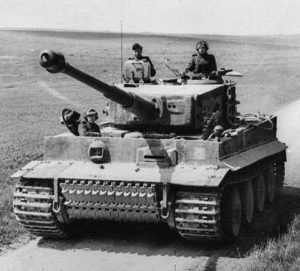 German Tiger Tank
German Tiger TankLike a lot of you, I recently read an article that said that a lot of what we think we know about World War II is terribly wrong. For instance, I always thought that German engineering was the best in the world, well it appears that a lot of weapons used by the Germans were over-engineered. The Tiger tank, for example, with its Porsche-designed six-speed hydraulically controlled semi-automatic gear-box was exceedingly complicated and unsuitable for the front line when compared to the four-speed US Sherman tanks. Even German small arms like machine guns weren’t all that good and many tended to overheat due to their phenomenal rate of fire.
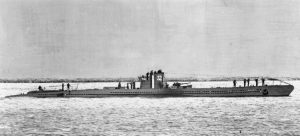 German U-Boat U32
German U-Boat U32I always thought that German U-boats sank a huge amount of tonnage during the war when in fact they only managed to sink 127 ships or 0.7% of the 18,772 sailings in 1940. U-boats were actually quite easy to track in the North Atlantic. When they surfaced to charge their batteries, their radio signals gave away their position to a chain of fixed radar towers along the south and east coast of Britain. This information was then relayed to the merchant marine convoys who could then take evasive action.
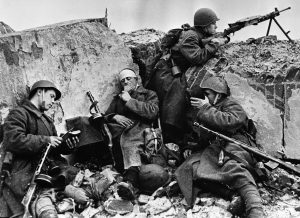 Soviet soldiers on the front line, 1944
Soviet soldiers on the front line, 1944A lot of Americans still think they won the war against Hitler, but nothing could be further from the truth. It was the Russians who won the war and paid for it with the loss of some 8 million dead, 20 times the loss of life among American servicemen. The Russians called it the Great Patriotic War and the turning point was the battle of Stalingrad.
And then there is the myth of six million Jews who died as a result of the holocaust. Today it is believed the numbers of dead are around one million Jews and non-Jews, not 6 million Jews. At the Nuremberg tribunal, the Allies charged that the Germans exterminated four million people at Auschwitz. The figure was invented by the Soviets and today no reputable historian accepts it.
Then there is the case of the “fake” gas chamber which each year is visited by tens of thousands of tourists. The French magazine L’Express acknowledged that “everything about the gas chamber is false” and it was actually built after the war. Today, Holocaust deniers have even raised the question as to the very existence of the gas chambers after Fred A. Leuchter, a leading American expert, carefully examined the Polish gas chambers in 1988 and concluded that the Auschwitz gassing story was absurd and technically impossible.
So maybe my imposter story about Rudolf Hess is perhaps not so surprising in light of the myths and falsehoods prevailing when one thinks about the events of WW2. The Playing Rudolf Hess novel is actually based on real events and on the known facts about the case. It’s a work of historical fiction and just the kind I like to tell.
Next week, I will you tell you how I got into historical fiction.
Meanwhile, can you think of any other myths and falsehoods about WW2?
Please share them in the comments section below.
October 2, 2016
1 – WRITING THE NOVEL
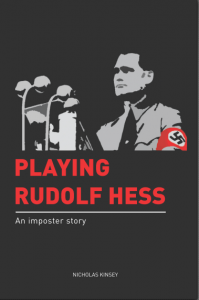 Coming soon: Playing Rudolf Hess
Coming soon: Playing Rudolf HessIt’s hard to believe that I am coming out soon with a novel based on a television drama series that I wrote back in 2014. I originally wrote Playing Rudolf Hess as a movie and then developed it into a six-hour television series.
It’s a great imposter story and it reads like a John le Carré novel. A friend of mine commented that my Paul Cummings character is “very reminiscent of George Smiley (John le Carré) and Bernard Samson (Len Deighton)”. Of course, it would be since the novel starts in Berlin in 1973 at the height of the Cold War.
The story deals with one of the greatest mysteries of WW2, the real identity of the Nazi Reichsminister. It is an historical novel that takes the reader back to wartime Britain with the rationing, the POW camps, the capture of enemy agents, the interrogations, the land girls, the secret codes, etc..
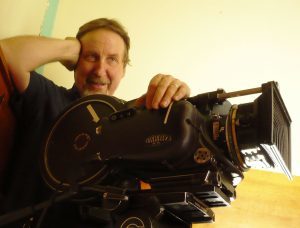
I’m new to writing novels. I’m a Canadian and British writer and director of feature films and television drama (Women Without Wings, Leatha Acident, Killing Ruth – the Snuff Dialogues, Treeline, Short Change, Cottage in America).
I am an avid reader of fiction, some 50 novels a year, mostly psychological thrillers, detective and historical novels, lots of them best-sellers. I suppose I inherited this taste for escapist literature from my mother who was a short story writer. Story ideas are what make me tick and the novel is a fantastic arena for exploring characters and story lines.
My background, however, is in science. I did a Master’s degree in Chemistry at the INRS (Université du Québec) after arriving in Canada from the US where I did a B.Sc. in Physics at Yale University. I abandoned my career in science when I fell in love with film production, cameras and sound recording. While working behind the camera as a director and cameraman, I discovered that I had a real talent for writing screenplays for film and television.
Writing, of course, is the key to a good movie. The story idea is very important. Is it fresh, new, different? Are the main characters sympathetic? Can we identify with this character or that? These are the main questions that we must ask ourselves when we start writing a script. A lot of times the structural problems in a film come from the script, so the cheapest way to address the problem is to do the work on the script first. It saves an immense amount of time and money later.
Writing is also the key to a good novel. The difference is that the canvas is much bigger. You need to write the back story of each character and know the thoughts going through their minds. You need to plan a novel. You need to know where you start and where you finish. For me writing a novel always appeared to be an insurmountable task and I never felt I was up to it.
On the other hand writing for film and television never felt like work. You see the characters and scenes in your head. It is easy to play with an idea, add a scene and see where it goes. I can’t imagine doing this in a novel. In writing for movies and television, I never feared the empty page, what I feared was not getting to the end of it. So I would write scripts at ferocious speeds, seven days a week with no let up until I got to the final page. I once wrote an entire first draft thriller entitled African Hearts in 11 days and it remains one of the best scripts I ever wrote, although it was never produced.
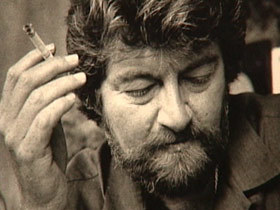 Joe Eszterhas – screenwriter
Joe Eszterhas – screenwriterLike the legendary screenwriter Joe Eszterhas, I prefer to write spec scripts. I hate to have to write the synopsis of a story that I haven’t written yet. I can write a spec script in no time once I have the characters in my head.
Film or television drama is a tough school and any competent writer quickly learns that the opening scene is key. How do we pull in the viewer? In film and television the story must unfold very quickly just like a best-selling novel today. So having written for film and television, I felt quite confident I could pull off a novel based on one of my own screenplays since more than half the work was already down on paper.
Next week, I will share with you some myths and falsehoods about WWII.
Meanwhile, please leave a comment below and tell me about your experiences as a writer! If you have written a book, fiction or non-fiction, how did it go?
Does one need to be born a writer today with all the technological assistance available?



